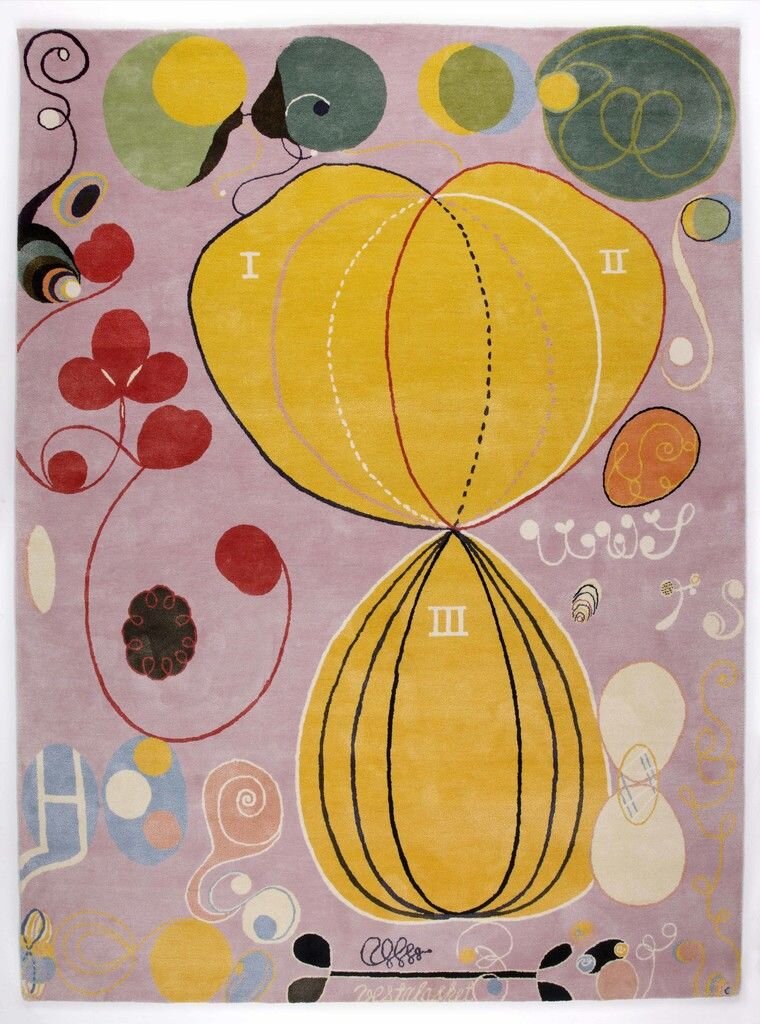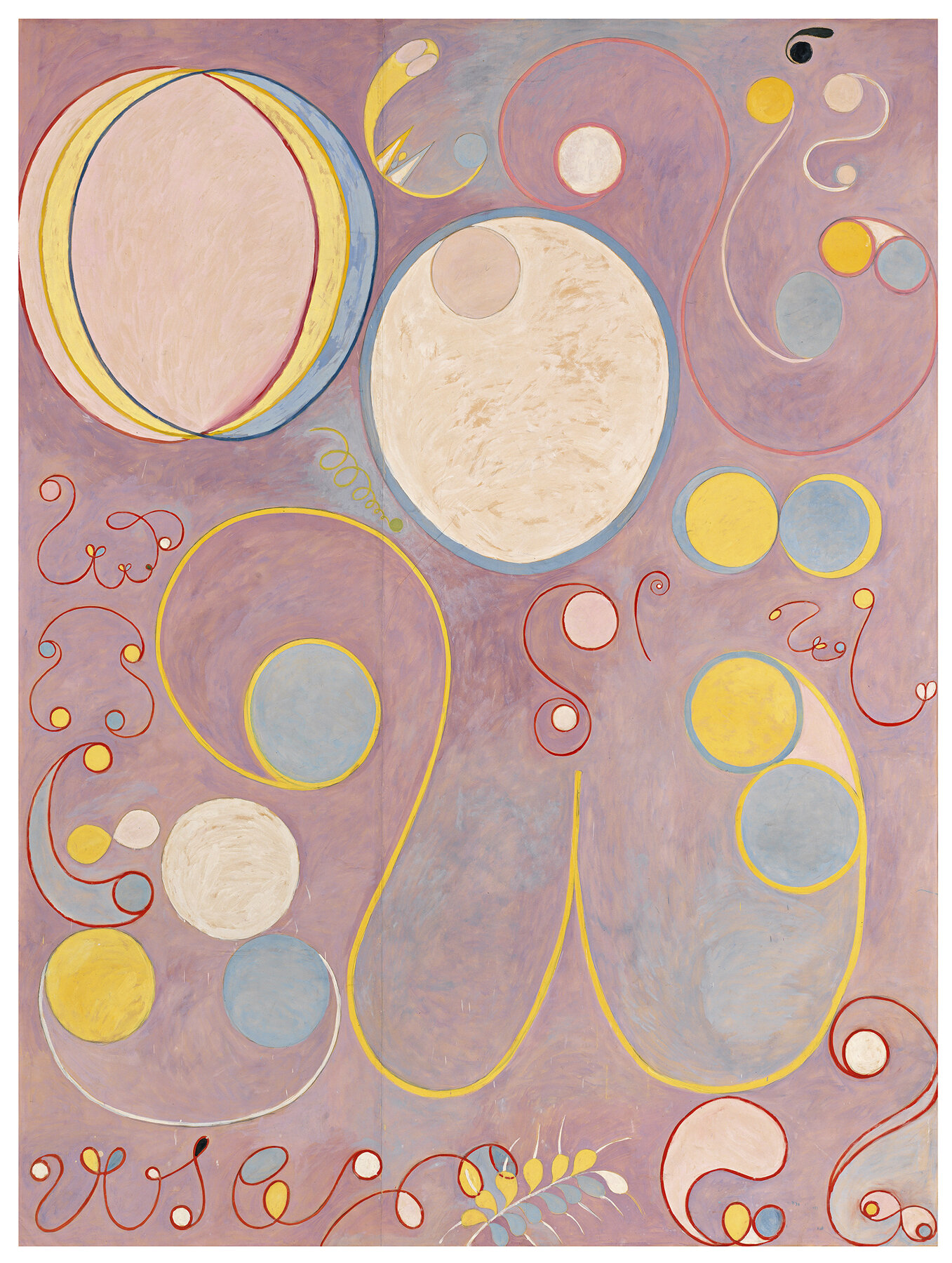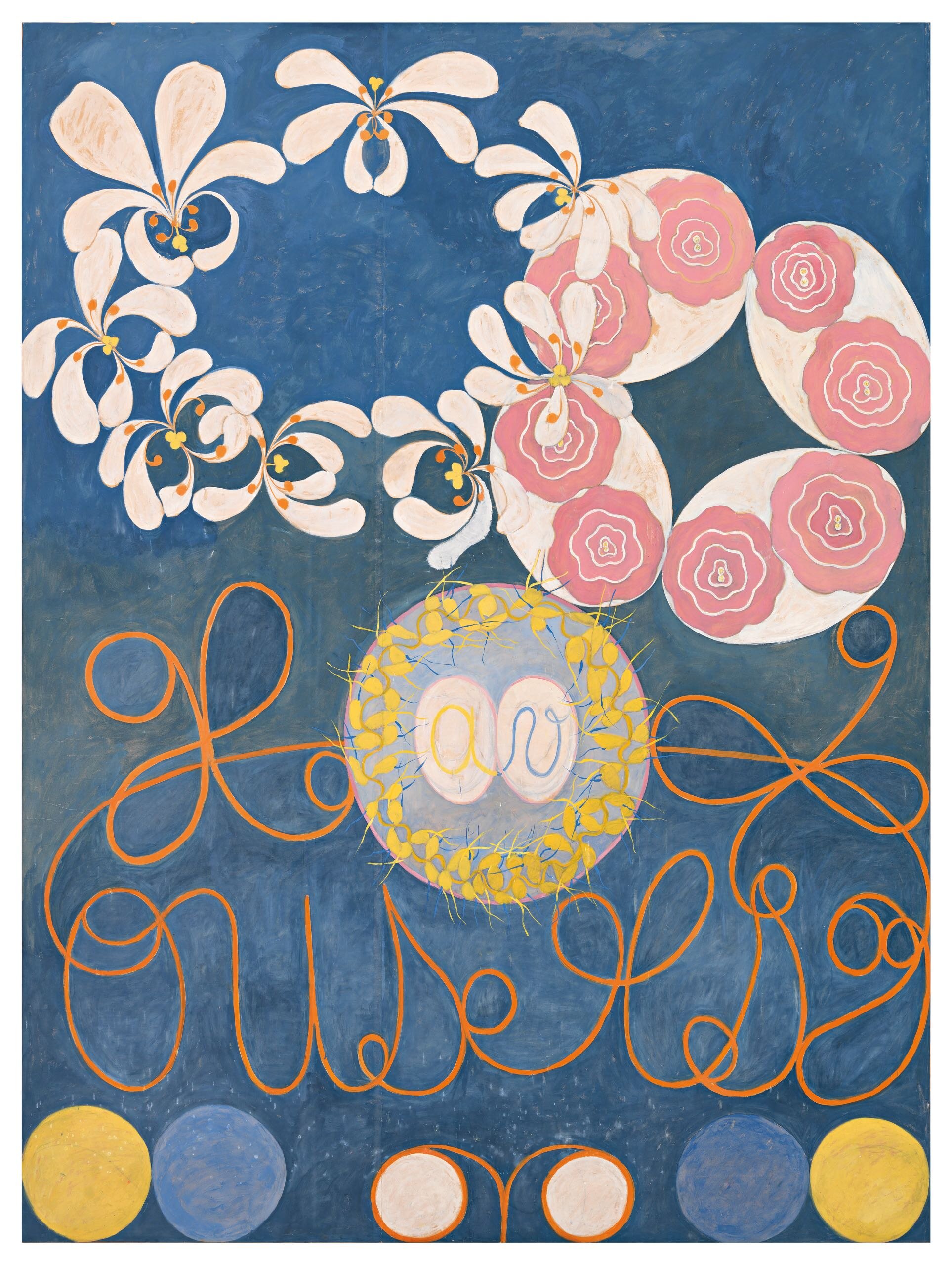Art from Within - Creative Expression, Skillbuilding
Lesson Description:
The skill-building lesson has three components. In the first lesson, students will learn how to create a balanced composition as well as create a focal point using shapes. Students will work in groups for this activity, using construction paper cutouts to build a composition. In the second lesson, students will learn about the basics of color theory and how to execute a triadic color scheme in their final piece. In the final skill-building lesson, students will practice using watercolor and learn the various techniques for executing their design. For homework, students will draw 5 potential designs for their watercolor paintings as thumbnail sketches in their sketchbooks.
Grade Level:
High School - Beginning
High School - Advanced
Time Frame:
3 - 70 minute class periods
Focus Artwork:
Lesson Objectives/Student Learning Outcomes:
Students will be able to:
Identify and exemplify the elements of balance, focal point, and variety in the work of Hilma af Klint and in their own group artwork.
Create a triadic color scheme using the color wheel.
Use various watercolor techniques e.g., charging and flat wash, in their sketchbook practice explorations.
Literacy Focus:
Listening - Students will listen to each other’s ideas about how to execute a balanced composition. Students will practice listening to and performing a task based on a set of instructions.
Speaking - Students will practice speaking in their small groups using vocabulary from the lesson.
Reading - Students will practice reading as they read through vocabulary terms and instructions for the day’s activities.
Writing - Students will practice writing as they write notes for their activity presentations.
Art Materials:
Sketchbook
Construction paper
Paper
Glue sticks
Pencil
Ruler
Colored pencils
Watercolor paints
Instructional Resources:
Chromebook
LCD Projector
HP Sprout or Docucam
Procedures:
Day 1:
Anticipatory Set:
Students will review the term of balance and look at various examples of balanced compositions.
Teacher will break students into small groups and pass out construction paper shapes, paper, and glue sticks.
Teacher will go over group work protocols, etiquette, and goals.
Independent Practice:
Students will be given 15-20 minutes to work in groups to create a balanced composition using the provided materials.
Once students finish their compositions, each group will present their composition to the class on the docucam.
Students will discuss observations of the compositions with their groups and share aloud.
Closure:
Exit ticket survey: What have you learned about balance.
Day 2:
Anticipatory Set:
Students will set up color wheels and color theory worksheets in their sketchbooks.
Guided Practice:
As a class, students will color in their color wheels. Teacher will utilize the docucam and have students follow along.
Teacher will explain what a triadic color scheme is and how to create one.
Independent Practice:
Students will create their own triadic color schemes and color in a coloring page with their chosen scheme to practice color theory and balance.
Closure:
Students will finish their coloring page as homework if needed.
Day 3:
Anticipatory Set:
Students will set up the watercolor technique page in their sketchbooks.
Teacher will review all materials and instructions with students prior to beginning artmaking.
Students will get supplies and wait for further instruction.
Guided Practice:
Direct instruction of flat wash and charging techniques. Students will follow along in their sketchbooks.
Direct instruction of texture techniques, students will watch and complete independently.
Independent Practice:
Students will practice texture techniques and color mixing techniques on their own for the remainder of the period.
Closure:
Students will write a short reflection about the techniques used and ask further questions via a GoogleClassroom post.
For a PDF of the sketchbook exercises, click here.
Modifications for Learners’ Specific Needs:
Reteaching in small groups.
Going over specific techniques with individual learners.
Modifying techniques for learners specific needs (e.g., charging with two colors instead of three).
Utilizing readymade worksheets instead of drawing their own.
Modified mediums and tools (e.g., larger brushes, condensed palettes to work with).
ELL Students:
Use of translated vocabulary sheets.
Lots of visual supports and scaffolds.
Multiple Intelligences Used:
Visual-Spatial
Drawing and filling out the interactive notes.
Creating sketchbook spreads with the various techniques.
Linguistic-Verbal
Using new vocabulary words introduced in the lesson.
Kinesthetic
Using fine motor skills to control watercolors.
Vocabulary:
Abstract art - art that does not attempt to represent external reality, but seeks to achieve its effect using shapes, forms, colors, and textures.
Balance - the use of artistic elements such as line, texture, color, and form in the creation of artworks in a way that renders visual stability.
Charging - technique that involves mixing two or more colors directly on the paper instead of premixing on a palette
Color scheme - the choice of colors used in various artistic and design contexts
Triadic color scheme - A color scheme that involves three colors that are equidistant from each other on the color wheel e.g., red-yellow-blue
Composition - composition is the placement or arrangement of the visual elements, such as figures, trees, and so on in a work of art, as distinct from the subject or the style with which it is depicted.
Flat Wash - brushing successive strokes of color on a wet or dry surface, with each stroke placed next to the other, to create an even layer of color
Focal Point - the area in the composition to which the viewer's eye is naturally drawn. It is essential to classic art, although abstract artists may deliberately create compositions without focal points. Focal points may be of any shape, size or color.
Intensity - a color’s saturation, brightness or strength
Subconscious - of or concerning the part of the mind of which one is not fully aware but which influences one's actions and feelings.
Variety - refers to the use of different qualities or instances of the visual elements. It is the opposite of repetitive or monotonous use of the elements, adds interest to the work of art.
Criteria for Assessment of Student Learning:
Did students….
Identify and exemplify the elements of balance, focal point, and variety in the work of Hilma af Klint and in their own group artwork?
Create a triadic color scheme using the color wheel?
Use various watercolor techniques e.g., charging and flat wash, in their sketchbook practice explorations?
Method of Assessment:
Formative
During anticipatory set, check for understanding by using thumbs up/thumbs down questions.
During guided practice, teacher will stop at key intervals to assess that all students are on the right track.
During guided practice, teacher will ask students to hold up their notes and/or give a thumbs up when they’ve completed the notes and are ready to move on.
During independent practice, teacher will walk around the room checking in on group discussions and asking further questions.
Summative
Groups will present their composition activities to the class and will be critiqued by students.
Notes, color wheel, watercolor worksheets, and thumbnail sketches will be collected during a sketchbook check.
National Core Arts Standards Addressed:
HS Proficient VA:Cr1.1.Ia - Use multiple approaches to begin creative endeavors.
For a PDF version of this lesson, click here.


